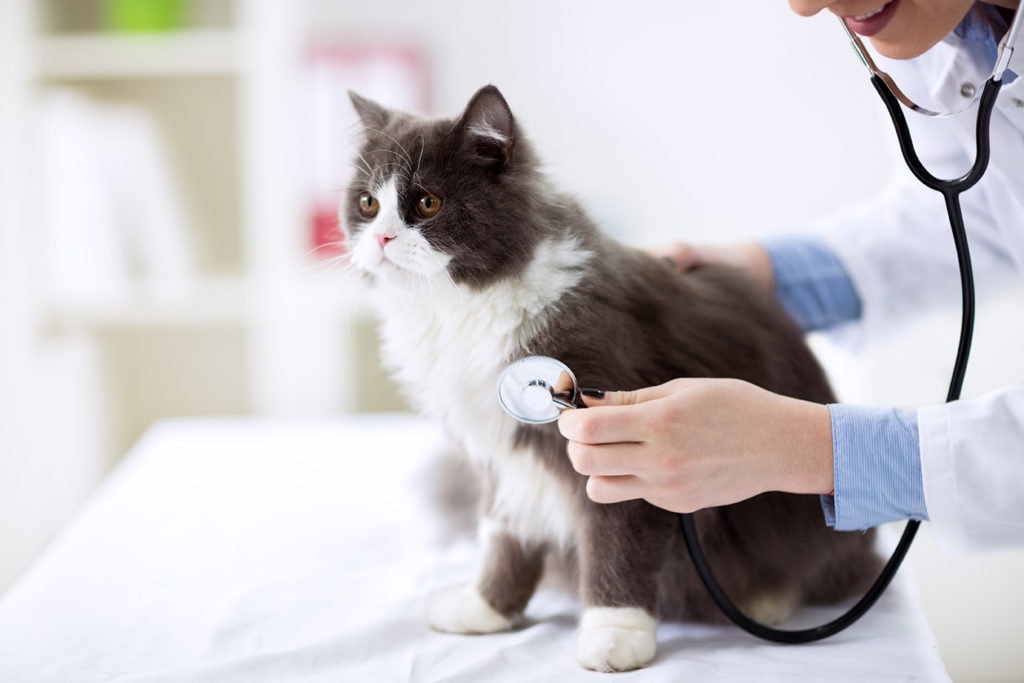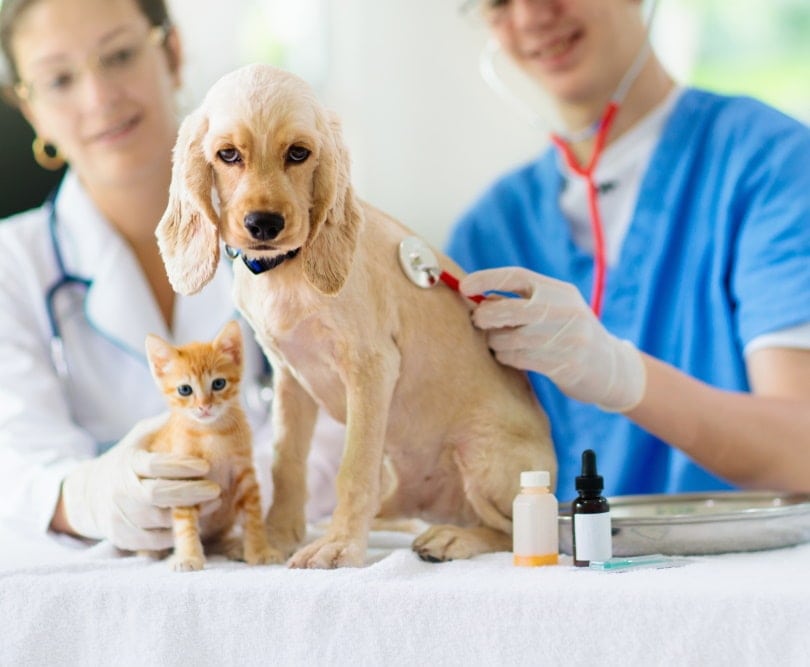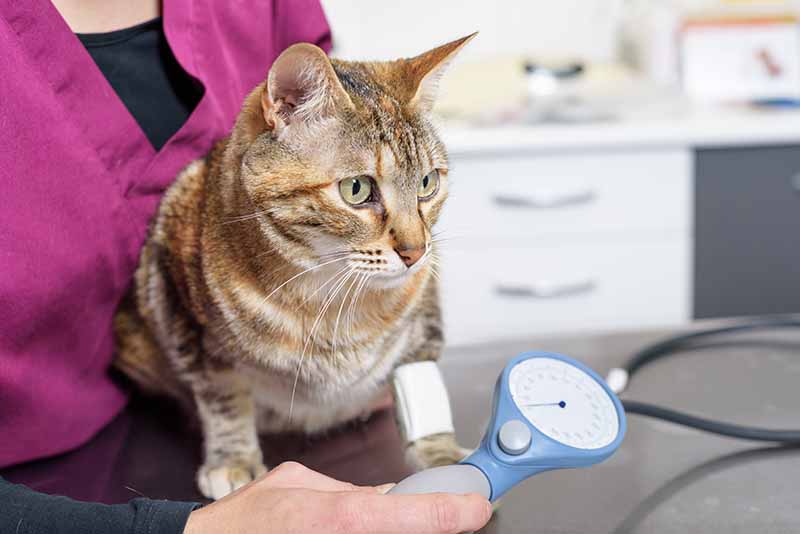Pet Diabetes Month 2024: When Is It and How Is It Celebrated?
Updated on

We’re all familiar with diabetes in humans, but pets are also prone to this condition, so there’s an entire month to raise awareness for this disease.
Every year, the month of November is Pet Diabetes Month in North America and most of Europe.
If you’re interested in learning more about Pet Diabetes Month, read on to discover what it’s about and how diabetes affects our pets.
Pet Diabetes Month
Pet Diabetes Month occurs for the entire month of November every year. It’s not so much a celebration as it is a way to raise awareness about the condition. That said, it can be a way to celebrate the discovery of insulin.
About one out of 230 cats and one in 300 dogs develop diabetes. This lifelong condition can’t be cured, but it can be controlled through a change in lifestyle and medication. Even so, diabetes can lead to many health-related complications.
Pet Diabetes Month was started to celebrate the birth month of the inventor of insulin. Canadian surgeon Sir Frederick Banting and medical student Charles Best discovered insulin at the University of Toronto on July 27, 1921.
Banting was given the Nobel prize in 1923, as diabetes was a fatal disease until insulin was discovered. Banting’s birthday was November 14, which is when World Diabetes Day is held, and his birth month is when Pet Diabetes Month is acknowledged.
Celebrating this month involves learning more about diabetes, spreading awareness, and looking after your pets to ensure that they are healthy.

Diabetes and Our Pets
It’s an unfortunate fact of life that pets can get diabetes. It’s most common in dogs and cats but can also occur in horses, pigs, and even apes.
Diabetes in dogs and cats (and even ferrets) can present itself similarly to humans, but there are differences.
Type 1 Diabetes
Type 1 diabetes is similar to type 1 diabetes in people. Type 1 diabetes is insulin dependent because the body’s immune system attacks the islet cells in the pancreas that produce insulin. Therefore, the pancreas doesn’t create the necessary insulin.
Type 1 diabetes is also the most common type that affects dogs. They will require injections of insulin over the course of their lifetime to maintain their health.
Type 2 Diabetes
Type 2 diabetes is insulin resistant, which means the cells in the body don’t usually react to the insulin that the body produces. This makes the pancreas create more insulin, but the pancreas will eventually be unable to keep up, which will increase the blood sugar.
Type 2 diabetes is more commonly associated with cats.

Causes of Diabetes
Type 1 diabetes can be caused by genetics, and certain dog breeds are predisposed to diabetes:
- Alaskan Malamute
- Bichon Frisé
- Labrador Retriever
- Miniature Schnauzer
- Miniature Wirehair Dachshund
- Poodle
- Pug
- Samoyed
- Yorkshire Terrier
In cats, the Siamese is more genetically predisposed to diabetes.
In certain cases, if a dog has Cushing’s disease, the body’s cortisol increases, which makes it much harder to regulate diabetes. Also, pancreatitis can destroy insulin-producing cells, which will lead to diabetes.
Type 2 diabetes tends to occur due to obesity and eating excessive amounts of high-fat food. This can happen if cats are fed too much human food, for example, as it will affect the pancreas.

Signs of Diabetes
Common signs of diabetes can include:
- Increased thirst and water intake (most common sign)
- Increased urination (cats may urinate outside the box)
- Increased appetite (in the early stages)
- Loss of appetite (later stages)
- Weight loss (even though they are eating well)
- Lethargy
- Dehydration
- Cataracts (primarily in dogs)
- Vomiting
Complications From Untreated Diabetes
Unfortunately, there are many long-term effects for animals that aren’t treated for their diabetes. Diabetic ketoacidosis happens when diabetes is not treated and is a medical emergency.
There’s also the chance of seizures, liver disease, hyperglycemic hyperosmolar syndrome, diabetic neuropathy, and cataracts. Untreated diabetes is fatal.

How You Treat Diabetes
Uncomplicated diabetes is treated with insulin and changes in the diet. While humans can treat Type 2 diabetes with oral medication and a change of diet, in pets, both Type 1 and Type 2 are treated with insulin. The oral medication that humans take isn’t effective enough for animals.
The injections are given twice a day subcutaneously, which is just under the skin. The good news is that dogs and cats have loose skin at the nape of their neck and don’t feel needles all that much. Beyond the needles, they will need frequent blood work checks and reevaluations at the vet.
With Type 2 diabetes, specifically with cats, a change in diet to food that is high in protein and low in carbohydrates is necessary. This change, along with weight loss and insulin, can potentially put the diabetes in remission.
Celebrate Pet Diabetes Month by Keeping Your Pet Healthy
In certain cases, you might be able to keep your pet healthy enough to decrease the chances of diabetes. It starts with a plan designed to keep your pet at a healthy weight in order to avoid obesity.
- Feed them a high-quality diet that’s low in carbohydrates.
- Avoid feeding rich and fatty foods to your pet.
- Don’t feed human food to your pet unless it’s been approved by your vet (no table scraps).
- Make yearly wellness checkups with your vet.
- Ask for routine screening tests even in healthy pets, especially as they get older.
- Ensure that your pet gets regular daily exercise.
You can focus on these tips during the month of November in order to observe Pet Diabetes Month, but it’s best to follow them all year, every year.

Conclusion
Pet Diabetes Month was designed to bring awareness to this condition. In certain cases, particularly with Type 2 diabetes, it’s not always apparent that there’s a problem. If your pet starts drinking and urinating much more than usual, see your vet immediately.
Knowing the signs of diabetes in pets is essential. The sooner your pet sees the vet and starts treatment, the more likely the diabetes will be more easily managed. With your care and treatment and regular visits to the vet, the prognosis for pet diabetes is good.
See Also:
Featured Image Credit; Tatyana Vyc, Shutterstock











